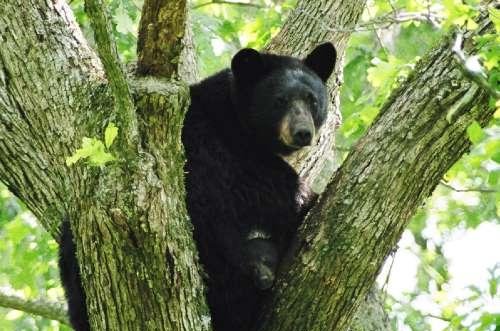A Louisiana black bear climbing a tree. (USGS)
BATON ROUGE, La., Nov. 21 (UPI) -- In 1992, the U.S. Fish and Wildlife Service classified the Louisiana black bear (Ursus americanus luteolus) -- a regional black bear variety endemic to the Mississippi River floodplain -- as "threatened."
More than two decades later, FWS is considering delisting the bear, and a new study by researchers at the U.S. Geological Survey suggests the agency would be well within reason to do so. Over the last 20-plus years, the bear's population has rebounded, the USGS report confirms.
USGS scientists calculate the Louisiana black bear, one of 18 subspecies of black bear in North America, has less than a one percent chance of becoming extinct during the next century.
Once common throughout the Southeast, ranging from Louisiana to East Texas, from southern Arkansas to western Mississippi, the bear's numbers had dwindled by the early 1900s due to habitat fragmentation and overhunting. But new research suggests conservation efforts are working and the bear has regained a foothold in the forests of the Deep South.
"Estimates of a species' viability can help wildlife managers determine the status of threatened, endangered or at-risk species and guide effective management efforts," Joseph Clark, USGS ecologist, said in a recent press release. "This study will be used by the U.S. Fish and Wildlife Service to determine whether to pursue removing the bear from the 'threatened' species list."
Clark led the recent study into the progress of the Louisiana black bear. His effort was aided by researcher Jared Laufenberg from the University of Tennessee, as well as scientists from the Louisiana Department of Wildlife and Fisheries.
As part of the study, researchers placed pastry baits guarded by barbed wire fences throughout the region's bear habitat. When the bears go after the pastries, they end up leaving DNA samples in the form of hair on the wires. The technique does not hurt the bears, scientists say. The DNA samples allow biologists to total a bear count and gauge the health of the subspecies' population.
"The completion of this project represents many years of collaborative work and we're excited about the results," said state biologist program manager Maria Davidson. "The information provided by this project is based on the best available science, enabling us to make management decisions focused on the long term sustainability of the Louisiana black bear."















